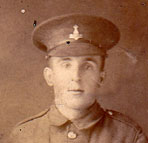 |
Remembrance
- The Yorkshire Regiment, First World War Private Thomas Joseph HOLBROOK. 16959 Close window to return to main page |
 |
Photos of Thomas Holbrook are shown below.
Private Thomas Joseph HOLBROOK. 16959 (Yorkshire Regiment) / 34747 (Duke of Welington's West Riding Regiment) / GS129210 (Royal Fusiliers).
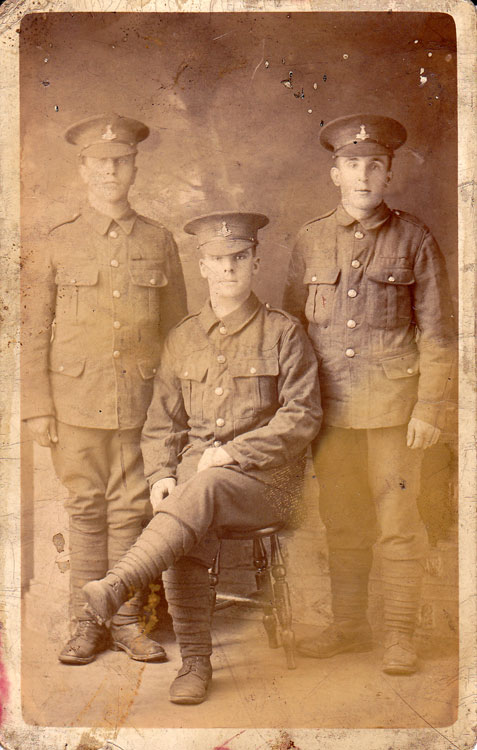
Thomas Holbrook on the extreme right, with two other Yorkshire Regiment soldiers.
We are very grateful to Thomas Holbrook's grandson, Thomas
Joseph Grainger (<tiptjg@sky.com>), for providing the photographs and
biographical information on Private Thomas Holbrook.
Thomas Holbrook was born in Washington, County Durham, on 23 January 1893.
He was a Coal Miner and lived in Washington.
He died on 11 April 1969 in Washington, and is buried in Washington Village
Cemetery.
He enlisted in the Yorkshire Regiment on 24 August 1914 for service with the
6th Battalion Yorkshire Regiment.
He was with the 6th Battalion in Gallipoli, where he was wounded on 7 August
1915 and evacuated to hospital in Malta.
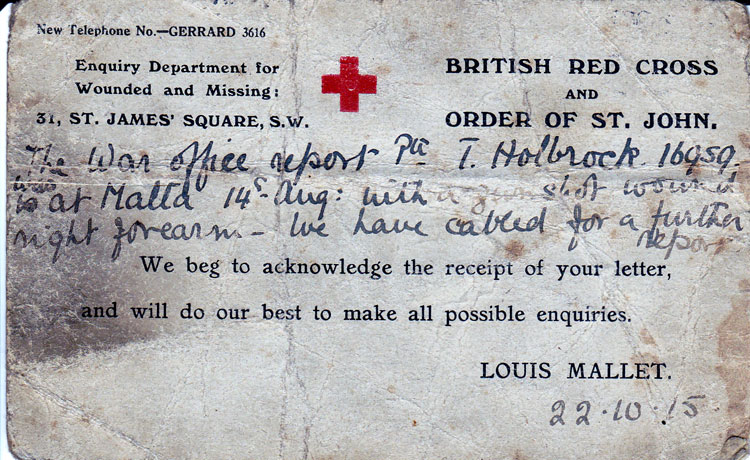 Notice
od Thomas Holbrook being wounded serving in Gallipoli
Notice
od Thomas Holbrook being wounded serving in Gallipoli
After recovering from his wound (gun-shot wound to the right
forearm) he was transferred to the 2nd Battalion Yorkshire Regiment.
He continued with service in the Yorkshire Regiment before being reported
wounded again in October 1916 (ref. GH Gazette XXIV, Vol 285, p121).
He was next transferred to the 13th Battalion Yorkshire Regiment (after recovering
from wounds in August / September 1916?).
He was awarded the Military Medal (circumstances unknown at this stage) in
September 1917.
On 11 April 1918 he was reported as wounded ("Contusions, buried")
still serving with the 13th Battalion Yorkshire Regiment. (Ref. Forces
War Records)
There is a photo of him in what appears to be a hospital uniform possibly
taken after being wounded on this occasion. In the photo there is a ribbon
for the Military Medal on his jacket.
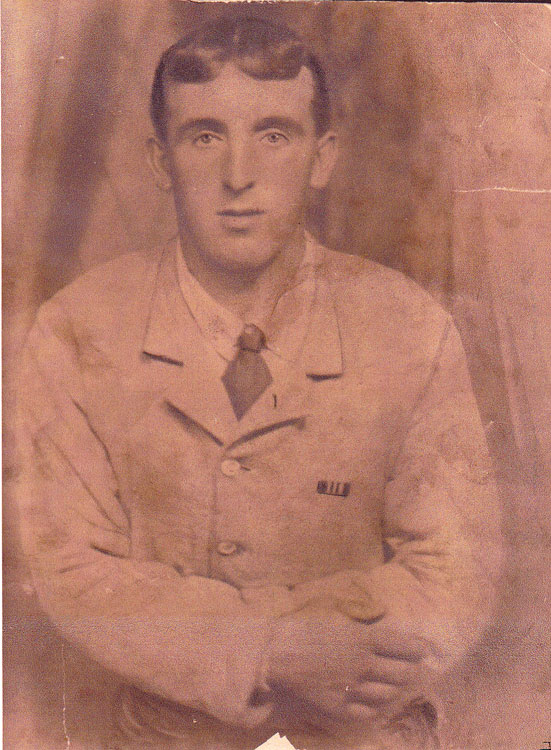
Thomas Holbrook in a Hospital Uniform (?) with the Ribbon for the Military
Medal on his Jacket
The 13th Battalion Yorkshire Regiment was disbanded in April
1918 (though re-formed back in the UK for subsequent service in Russia).
Following this disbandment of the 13th Battalion, Thomas Holbrook was transferred
to the Duke of Wellington's West Riding Regiment.
On 27 August 1918 he was wounded again, - this time the wound was a (slight) gunshot wound to the neck (ref. Forces War Records).
In the Duke of Wellington's West Riding Regiment, there is
a photo of Thomas Holbrook with a group of other soldiers. What is remarkable
about this photo is that Thomas Holbrook has FIVE wound stripes on his left
forearm sleeve!
The photo shows a board with "Brigade Hd Qtrs" and a Pelican.
The Pelican (christened a ‘duck’ by the troops) was the formation
sign of the 62nd (2nd West Riding) Division. According to “The Long
Long Trail” the 186th (2/2nd West Riding) Brigade was part of that Division
and various battalions of The Duke of Wellington's were in that Brigade.
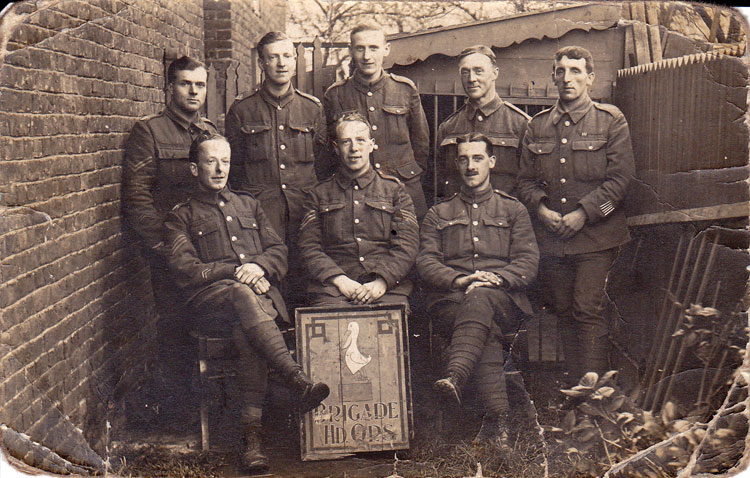 Thomas
Holbrook with 7 other soldiers in "Brigade Headquarters". Thomas
Holbrook on the extreme right.
Thomas
Holbrook with 7 other soldiers in "Brigade Headquarters". Thomas
Holbrook on the extreme right.
Thomas Holbrook was transferred to the 45th Battalion Royal Fusiliers in April 1919. The 45th Bn of the Royal Fusiliers was formed in London in April 1919 and served in North Russia until disbanded in December 1919.
Thomas Holbrook served as a Corporal with the Pioneer Corps in the Second World War, retiring after over 1 1/2 year's service in April 1942 when he was transferred to the TA Reserve.
-----------------> Return to top of the page